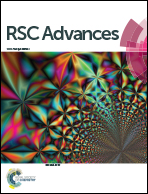Preparation and properties of aramid pulp/acrylonitrile-butadiene rubber composites
Abstract
In this investigation, aramid pulp (AP) was introduced into acrylonitrile-butadiene rubber (NBR)-based composites in various amounts by two different introduction methods. An AP/NBR predispersion was applied to improve the AP dispersion in the matrix, and its effects on the characteristics and properties of the composites were studied. The results showed that the optimum curing time of the compounds was affected by the AP introduction method due to heat generation at different mixing stages. The addition of AP affected the swelling properties and significantly improved the hardness, modulus and tear strength. The tensile strength decreased and then increased with increasing AP content. The AP predispersion obviously further improved the tensile strength of the composites with AP content above 7.5 phr owing to better fiber network formation inside the rubber matrix during the stretching process. The dynamic mechanical properties were not sensitive to the AP introduction method. The addition of AP was conducive to the wear resistance, and the dispersion improvement could further enhance the uniformity of the worn surface and mitigate crack generation.



 Please wait while we load your content...
Please wait while we load your content...